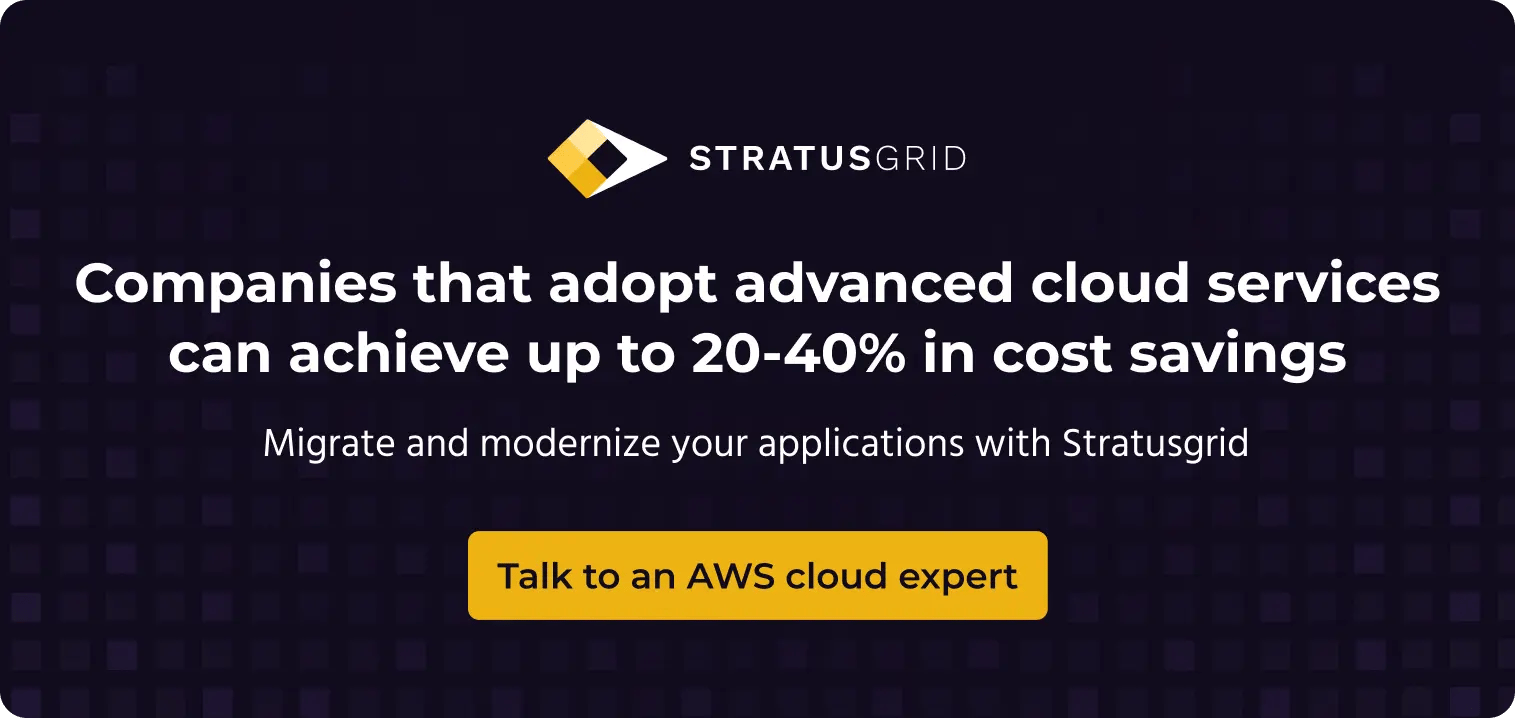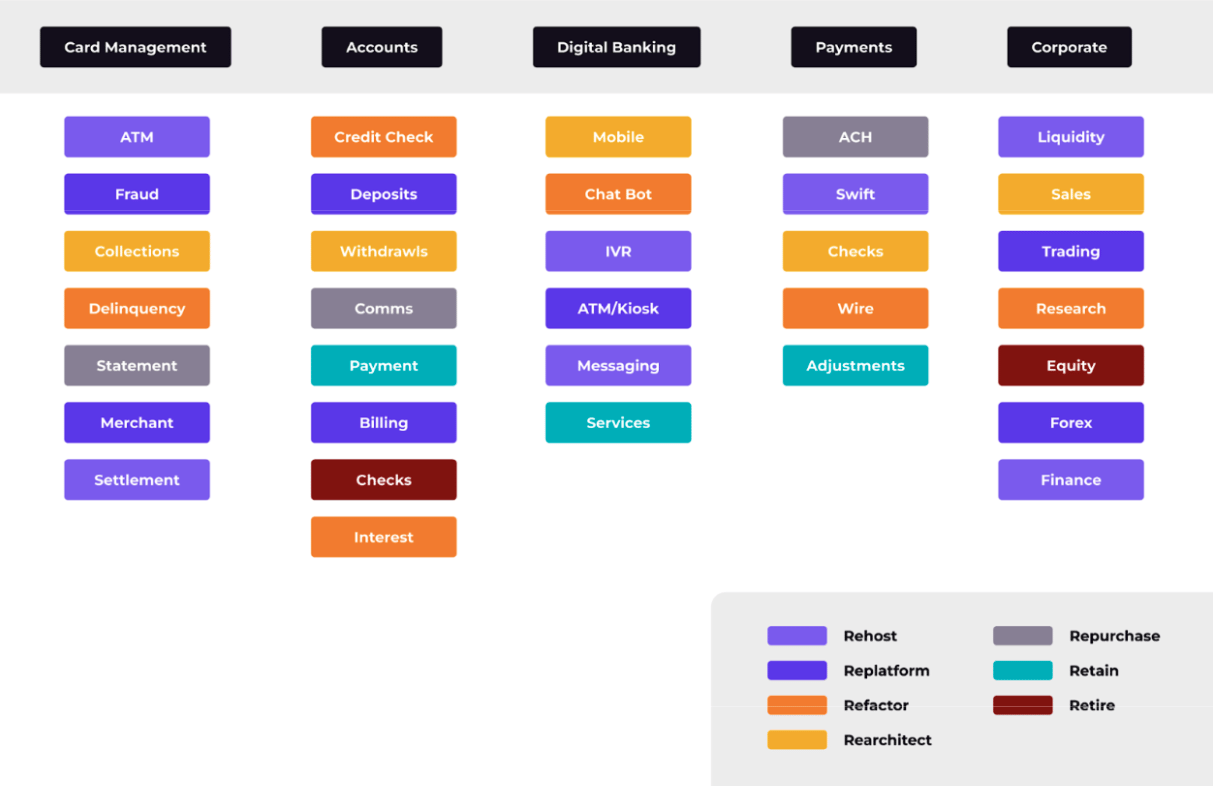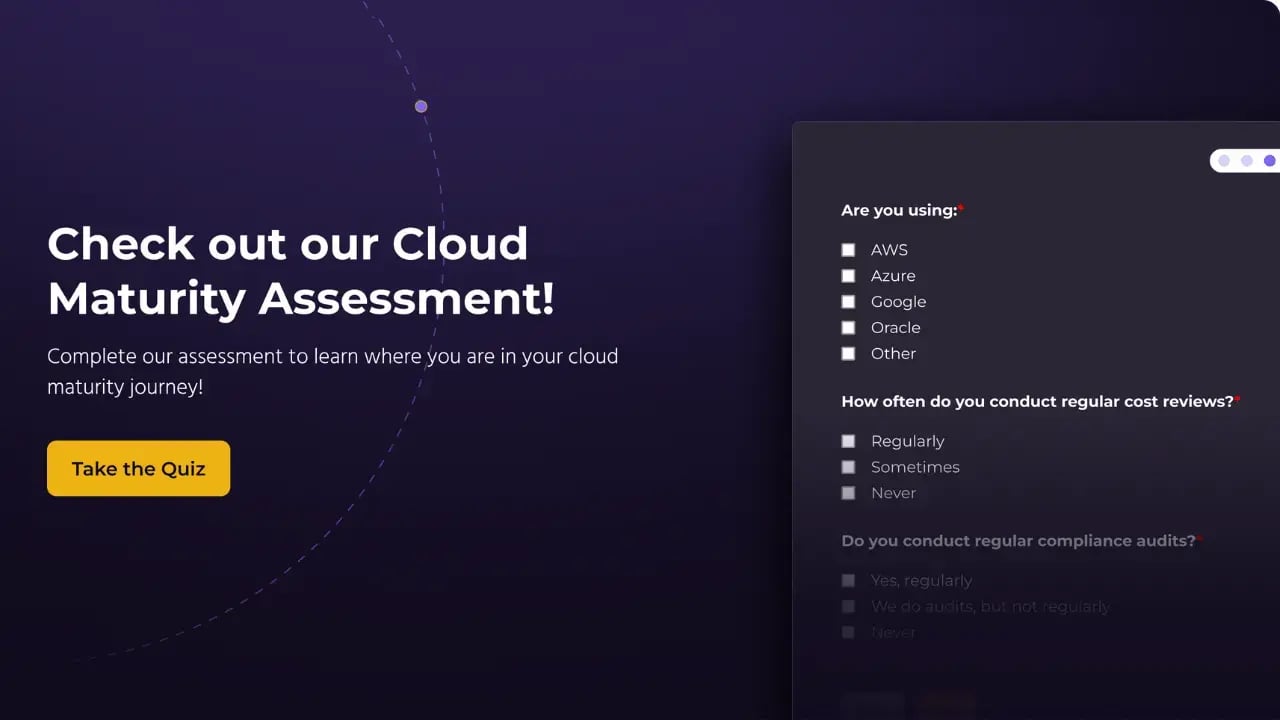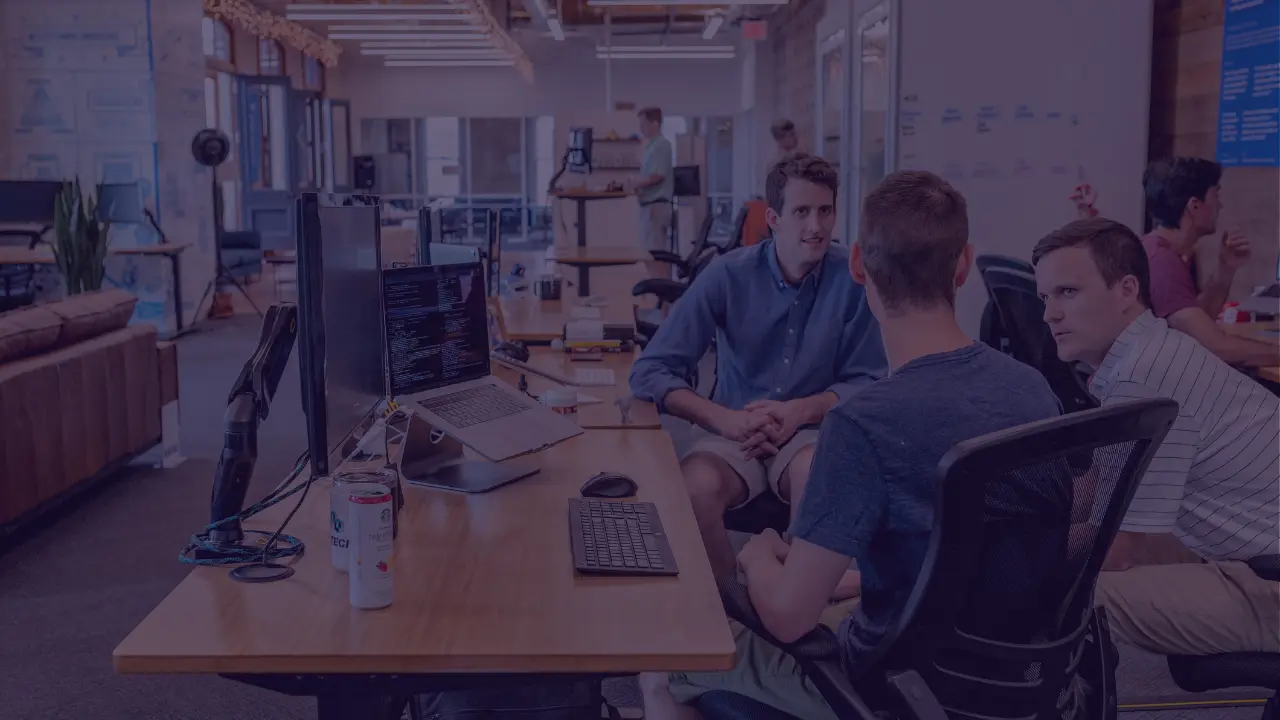Following our exploration of the Rs of Application Modernization, where we shared strategies your organization can employ to revitalize your app portfolio, we will now go over another crucial component of the modernization journey: application rationalization.
This process is key in deciding what to do with your application portfolio because it guides you on which modernization strategies to apply for optimal tech stack efficiency.
What is Application Rationalization?
Application rationalization, a core element of Application Portfolio Management (APM), is the process of evaluating your organization's software applications to determine their fate—whether to retain, update, merge, or retire them.
This systematic evaluation aims to assess an organization's portfolio of software applications and decide what to do with each application. This process helps in ensuring your app portfolio is efficient, cost-effective, and aligned with business goals.
When rationalizing your applications, you:
- Take a comprehensive look at all the software applications your organization uses.
- Identify redundancies and obsolescence.
- Decide on the next steps for each one of them.
- Ensure that your final suite of applications is modern, efficient, and closely aligned with your organization's strategic goals.
When Is App Rationalization Recommended?
- When companies are undergoing M&A.
- When different LOBs or departments usually acquire software independently without IT’s approval.
- When looking to enhance operations and cut costs.
- During digital transformation initiatives.
- After significant IT projects or system implementations.
Who Gets to Decide What to Do With Applications?
Application rationalization is a collaborative process that involves multiple stakeholders within an organization. Here's a breakdown of who typically gets involved in these decisions and their roles:
- IT department: IT professionals, including system administrators, IT managers, and CTOs.
- Different business units: Representatives from various business departments should be involved in the decision-making process. These stakeholders can provide valuable insights into how applications are used in day-to-day operations and their importance to specific business processes.
- Executive leadership: High-level executives, such as CEOs or CFOs, are often involved in the final decision-making process, especially when it comes to applications that have significant cost implications of strategic importance.
- Finance department: The finance team can provide data on the costs associated with maintaining each application, including licensing fees, support costs, and any potential savings from eliminating redundant applications.
- Risk and compliance teams: These teams ensure that any decisions made do not violate compliance requirements or introduce new risks to the organization.
- End users: Sometimes, it's beneficial to include feedback from the end users of the applications. They can offer practical insights into the utility and efficiency of the applications in their daily work.
- External consultants: In some cases, organizations may bring in external consultants or industry experts to provide an unbiased perspective on application redundancy. Contact StratusGrid for a comprehensive assessment of your tech stack. We can help you modernize, stabilize, and optimize your applications in the AWS cloud.
Application Rationalization is Part of Cloud Cost Optimization
Getting started with AWS cloud cost optimization? Application rationalization should be your starting point. By identifying overlapping functionalities and outdated applications, you can cut unnecessary costs on licenses, maintenance, and support, channeling your budget towards applications that truly drive business value and growth.
The strategic pruning of your application portfolio optimizes costs and simplifies management, which allows your IT teams to focus on innovation rather than maintenance.
Application Rationalization is Also The First Step in Your Cloud Modernization Journey
Since application rationalization acts as a strategic audit that provides a detailed inventory of your applications, it can also help assess their readiness for cloud migration and modernization.
Application rationalization ensures that only essential and suitable applications are migrated to the cloud, aligning your migration strategy with your business goals and laying the groundwork for a modernization strategy that fosters growth and innovation.
By streamlining your application portfolio through rationalization, you're setting up your organization for a future of efficiency and strategic agility.

Introducing The Gartner TIME Model for Application Rationalization
The Gartner TIME (Tolerate, Invest, Migrate, Eliminate) model is the industry standard for planning and implementing application rationalization projects. It helps you evaluate the software by looking at two main things: how well it works technically (technical fit) and how well it meets your business needs (functional fit).
"Technical fit" = Is the software up to standard? Is it easy to take care of? Does it need special skills or a lot of training to use? Sometimes, the software might be slow, break down often, not work well with other systems (making you enter data by hand), have security issues, or contain incorrect information.
"Functional fit" = Does the software help you reach your business goals?
Read our blog on The Benefits of Cloud Migration –And The Risks of Ignoring It here.
After checking both the technical and functional aspects of the software, the TIME framework then places it into one of 4 categories (TIME) to help you decide what to do with it.
Let's break down what each category of the TIME model means:
- Tolerate: Not every application needs immediate action. Some applications, while not fully aligned with current business strategies or technology standards, may still provide necessary functionality without incurring significant costs or risks. These are the applications you 'Tolerate.' They are kept as-is for the time being, with minimal investment, until a more suitable time for reevaluation or until they are naturally phased out.
- Invest: Certain applications in your portfolio are critical to your business's success and future growth. These are the applications where you choose to 'Invest.' Investing can mean upgrading to the latest version, adding new features, or integrating these applications more deeply into your business processes. The goal is to enhance their value and ensure they continue to support your business objectives effectively.
- Migrate: Technology evolves, and so do business needs. Some applications may no longer fit your current infrastructure or may benefit significantly from newer technologies. 'Migrate' applies to applications that are viable and necessary but need to be moved or transformed to a more modern platform or environment. Migration can optimize their performance, security, and alignment with business goals.
- Eliminate: Finally, there are applications that no longer serve a valuable purpose, are redundant, or are more costly to maintain than to replace. These are the applications you 'Eliminate.' Elimination helps in decluttering your IT landscape, freeing up resources, and reducing unnecessary costs. It's about making the tough but necessary decisions to retire applications that no longer contribute to your organization's objectives.
The Gartner TIME model and the 7 Rs of application modernization are complementary frameworks that organizations can use to strategize their IT infrastructure and application portfolio management. While the TIME model helps categorize applications based on their current value and suitability, the 7 Rs provide actionable strategies for each application based on this categorization.
What are The Benefits of Application Rationalization?
By conducting a thorough assessment and rationalization of your application portfolio, your organization can achieve:
- Cost efficiency: By identifying and eliminating redundant or underutilized applications, you can significantly reduce costs associated with licensing, maintenance, and support, reallocating those funds to more critical areas of your business.
- Enhanced productivity: Streamlining your application portfolio reduces complexity, making it easier for employees to find and use the right tools.
- Improved security: Rationalization reduces the attack surface by eliminating outdated or unnecessary applications, which enhances your organization's overall security posture.
- Better resource allocation: With a clear understanding of which applications are vital, resources can be optimized and directed toward maintaining and improving applications that offer the most value.
- Strategic alignment: Application Rationalization ensures that your IT infrastructure is fully aligned with your business goals, supporting growth and enabling agility in response to market changes.
What are The Risks of Not Doing Application Rationalization?
On the other hand, neglecting app rationalization can pose several risks to an organization, including:
- Operational inertia: Without rationalization, an organization may find itself stuck with legacy systems that hinder agility and adaptability. This operational inertia can make it challenging to respond to market changes or adopt new technologies.
- Ineffective disaster recovery: A sprawling, unassessed application landscape can complicate disaster recovery efforts, which can increase recovery time and impact business continuity during unforeseen events.
- Resource drain: Without a clear understanding of application value and usage, organizations risk allocating human and financial resources to maintain and support low-value or redundant applications, diverting attention from strategic initiatives.
- Data silos and integration issues: A lack of rationalization can lead to data silos, where information is isolated within different applications or departments.
- User experience deterioration: An excessive number of applications, especially overlapping in functionality, can confuse users, leading to decreased productivity and satisfaction. It can also result in a lack of standardization, complicating training and onboarding processes.
How Do You Triage and Rationalize Your Application Portfolio?
Here's a step-by-step guide on how to rationalize your application portfolio:
1. Create a comprehensive inventory
Start by cataloging every software application in your organization. Include details like the application's purpose, user base, frequency of use, associated costs, and technical specifications. This inventory will be your foundation for making informed decisions.
2. Evaluate technical and functional fit
Carefully assess each application for both its technical performance and how well it meets your business needs using the Gartner TIME model to guide this evaluation. Focus on a detailed assessment for prioritized applications, identifying those that offer quick wins or are critical for short-term migration.
AWS suggests that there are 5 key areas to survey when determining the target disposition for an application. These are the questions they recommend asking:
- Business criticality: How does this application support the business? What’s the financial impact if it fails? How many users? Transaction volumes? Regulatory and compliance requirements?
- Technical complexity: What is the technical nature of the application and its complexity? What programming languages and technologies were used? How many integration interfaces and application dependencies are there? How complex is the maintenance? How much technical depth exists? What are the agility challenges and skills shortage issues?
- Application health: What is the current status of the application? Is it meeting Service Level Agreements (SLAs) for batch and online? How many failures, incidents, or trouble tickets during the last year? What issues are there with uptime? How many releases and enhancements were there in the previous year?
- Support level & data volumes: What is the background for application size and SLAs? How big is the application – number of programs, total Lines of Code? How much data does the application handle? What are the performance SLAs? Are there specific application pain points
- Level of documentation: What is the level of documentation available for the application? Is there documentation for architecture and interfaces? Is there a runbook? What are the naming conventions? How are job schedules and ad hoc requests handled? Are applications commented?
It is also helpful to calculate the ROI and TCO (Total Cost of Ownership) of each application since software should correlate to cost and a specific business outcome or KPI.
3. Categorize thoughtfully to identify redundant and outdated applications
This categorization should inform your migration strategy, helping you to identify which applications to retain, invest in, migrate, or eliminate, aligning with your broader IT and business strategy.
Read our blog on 9 AWS Migration Tools You Need for a Successful Cloud Migration here.
4. Develop specific action plans for each category
Tailor your strategies for each category of applications. These plans should consider the short-term and long-term impacts on your IT ecosystem and business operations.
5. Engage with stakeholders
Maintain open communication with all relevant stakeholders throughout the process. Their insights and buy-in are crucial for the successful rationalization and implementation of changes.
6. Execute
Implement your action plans with clear communication and minimal disruption to business operations. Ensure that transitions are smooth and that any decommissioning of applications is handled methodically.
7. Monitor and review regularly
Establish a routine for monitoring the performance and relevance of your applications. Regular reviews can help you adapt to changing business needs and technological advancements.
8. Document everything
Keep detailed records of your rationalization process. Documentation is key for transparency, compliance, and as a reference for future rationalization efforts. Use this documentation to iterate on your rationalization strategy, refining your approach based on lessons learned and changing organizational dynamics.
Outcomes You Can Expect
- A comprehensive inventory: You will gain a thorough understanding of your entire application landscape. This includes not just a list of applications but a deep understanding of their interdependencies, technical specifications, and how they interplay within your IT ecosystem, facilitating well-informed strategic decisions.
- Early identification and prioritization of key applications: Expect to pinpoint critical applications that require immediate attention for migration or modernization.
- Formulation of a strategic migration blueprint: The creation of a meticulously detailed and prioritized migration agenda. This blueprint will outline the 'what' and 'when'.
- Discovery of optimization and modernization options: Through an ongoing evaluative process, be prepared to uncover a spectrum of opportunities to refine and enhance your application portfolio.
After identifying, documenting, and categorizing the applications, you're set to build a strategic migration plan. This involves arranging the applications into prioritized groups, taking into account their business criticality and technical readiness.
For instance, the dependency of one group on another will determine their migration order.
Your migration strategy could also incorporate an initial Proof of Concept (POC) phase, serving as a validation step to ensure the efficacy and viability of your migration approach before you proceed with the full-scale migration.
Here’s an example of what your final outcome should look like:

Image source.
6 Challenges to Application Rationalization and How to Avoid Them
Application rationalization is a critical but complex process that can encounter several challenges along the way. Understanding these challenges and preparing strategies to mitigate them can enhance the success of your efforts.
- Lack of comprehensive inventory: One of the primary challenges is not having a detailed and accurate inventory of the application landscape. Without this, rationalization efforts can be misguided or incomplete. Ensure a thorough inventory process is the first step in your rationalization journey. Utilize automated tools where possible to capture a detailed and accurate picture of your application portfolio.
- Resistance to change: Stakeholders and end-users may resist changes, especially if they are accustomed to certain applications, regardless of their efficiency or alignment with business goals. Engage stakeholders early in the process. Communicate the benefits and rationale behind the rationalization efforts clearly and ensure there is a feedback mechanism to address concerns and suggestions.
- Inadequate assessment: Incorrectly assessing the value or fit of an application can lead to poor decision-making, where critical applications might be discarded or redundant ones retained. Employ a robust framework like the Gartner TIME model for assessment and consider multiple dimensions, including technical performance, business value, and user feedback, in your evaluation process.
- Integration and dependency overlook: Failing to consider the interdependencies between applications can lead to disruptions if a critical interconnected application is altered or removed. Map out the dependencies and integrations thoroughly before making any decisions. This should be an integral part of your inventory and assessment phases.
- Resource constraints: Rationalization can be resource-intensive, and without adequate allocation, initiatives can stall or fail to deliver the expected outcomes. Secure executive buy-in and ensure that adequate resources, both in terms of budget and personnel, are allocated to the rationalization efforts. Consider phased approaches to manage resource utilization effectively.
- Lack of continuous improvement: Treating application rationalization as a one-time project rather than an ongoing process can lead to the re-emergence of inefficiencies. Establish application rationalization as a continuous process, integrating regular reviews and updates into the IT management routine to adapt to changing business needs and technology landscapes.
How StratusGrid Can Support You
StratusGrid offers a specialized application rationalization approach to guide your transition to AWS, ensuring your applications are optimally aligned with both technical and business requirements.
Our approach includes a detailed assessment of your workloads, coupled with a data-driven analysis to identify and strategize next steps. Through our comprehensive discovery and analysis, we create a tailored backlog, ensuring each workload's strategy is clearly defined and documented, setting a solid foundation for your cloud migration, stabilization, modernization, or optimization journey.
We will also introduce you to Stratusphere™ FinOps, our advanced cloud cost optimization dashboard, to help you monitor and optimize complex cloud expenditures effectively. Stratusphere™ FinOps offers in-depth insights into your cloud usage and spending, enabling you to identify cost-saving opportunities by level of effort and make informed decisions about your cloud investments.
Contact us today for more information on how StratusGrid can support your application rationalization. You can also try Stratusphere™ FinOps for free.
See Stratusphere™ FinOps in Action Here
BONUS: Find Out if Your Organization is Ready for The Cloud ⤵️


